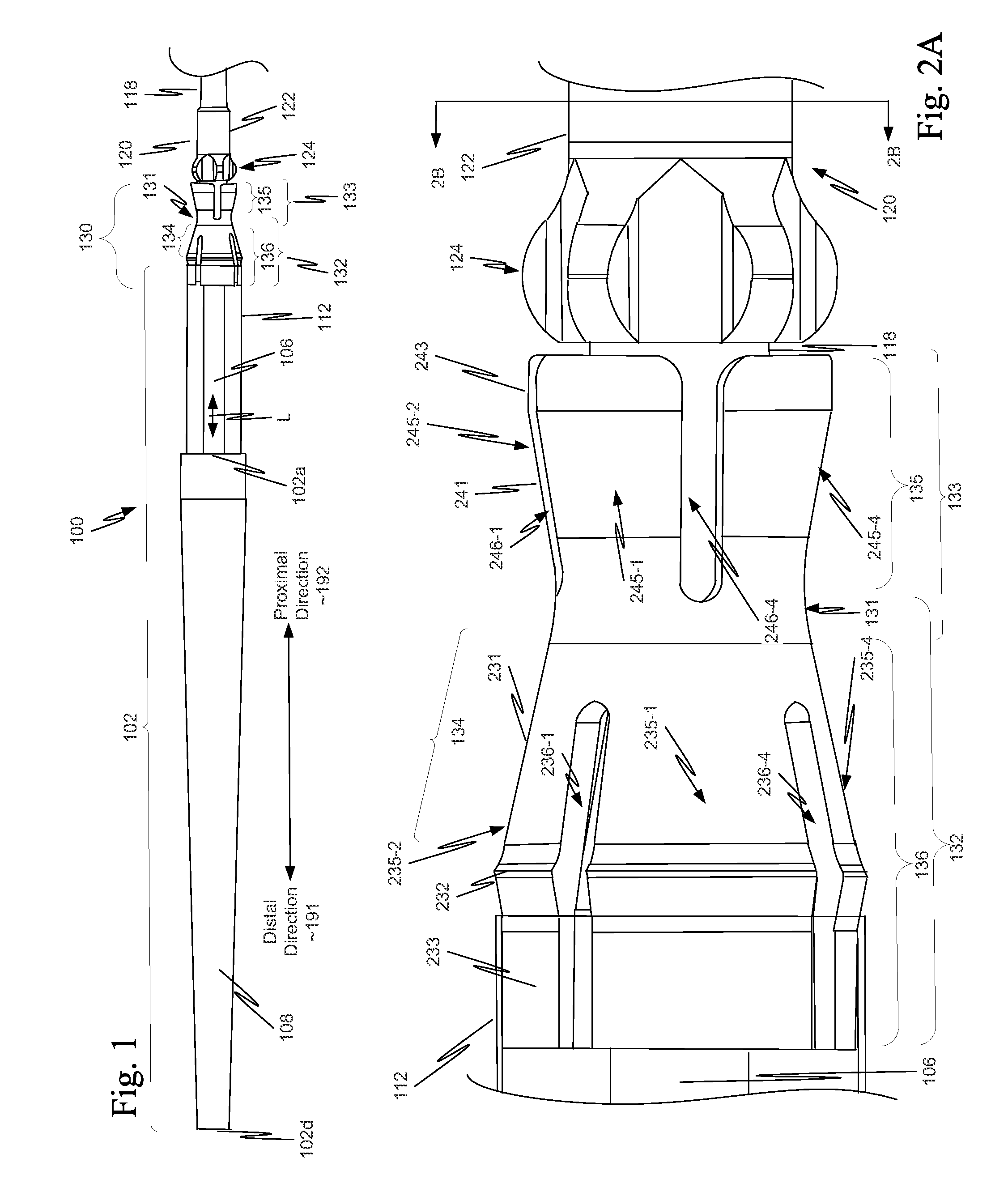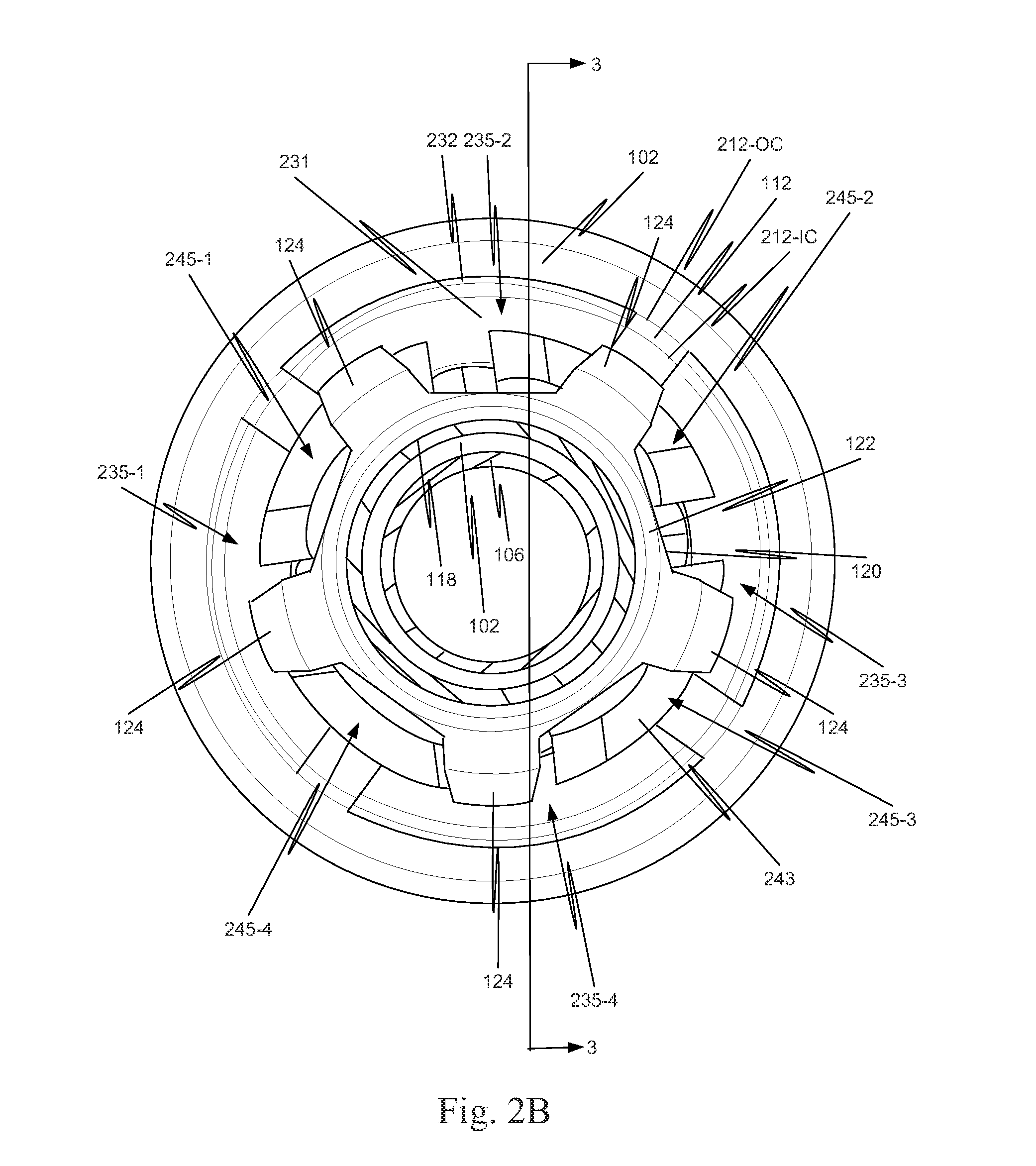Delivery System Ejection Component and Method
a delivery system and stent technology, applied in the field of medical devices and procedures, can solve the problems of difficult repositioning room for error in placement, and difficult retraction of the stent-graft after initial deployment, except for a minimal pull down retraction
- Summary
- Abstract
- Description
- Claims
- Application Information
AI Technical Summary
Benefits of technology
Problems solved by technology
Method used
Image
Examples
Embodiment Construction
[0040]As illustrated in FIG. 1, in a first example, a component 130 is located on a distal portion of a stent delivery system 100. Component 130 includes both a retaining-sleeve landing component 132 and a stent ejection component 133. Retaining-sleeve landing component 132 includes a body 131 and a landing collar 136. Stent ejection component 133 includes body 131 and an ejection collar 135. Thus, in this example, retaining-sleeve landing component 132 and stent ejection component 133 share body 131.
[0041]While in the example of FIG. 1, component 130 includes both stent ejection component 133 and retaining-sleeve landing component 132, this is illustrative only and is not intended to be limiting. In view of this disclosure, a component can include only one of stent ejection component 133 and retaining-sleeve landing component 132. These alternatives follow directly from the example discussed more completely below with respect to FIGS. 1, 2A, 2B and 3. Thus, drawings of a delivery s...
PUM
 Login to View More
Login to View More Abstract
Description
Claims
Application Information
 Login to View More
Login to View More - R&D
- Intellectual Property
- Life Sciences
- Materials
- Tech Scout
- Unparalleled Data Quality
- Higher Quality Content
- 60% Fewer Hallucinations
Browse by: Latest US Patents, China's latest patents, Technical Efficacy Thesaurus, Application Domain, Technology Topic, Popular Technical Reports.
© 2025 PatSnap. All rights reserved.Legal|Privacy policy|Modern Slavery Act Transparency Statement|Sitemap|About US| Contact US: help@patsnap.com



